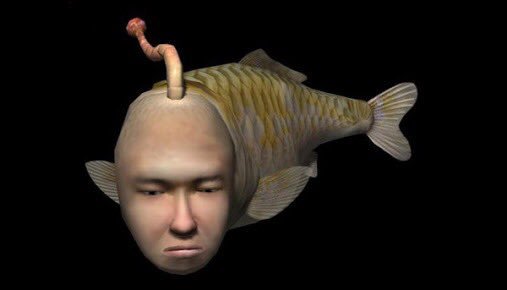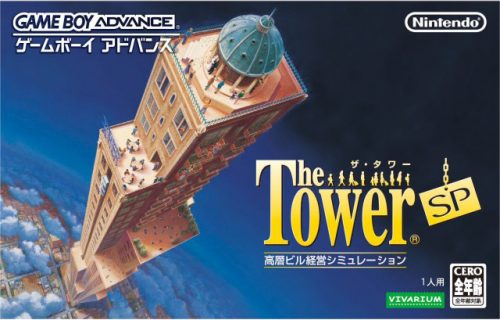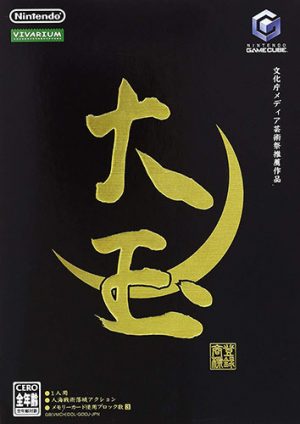

Visionary game designer Yoot Saito’s imaginative works have an unusual charm that have cemented his continuing legacy as a phenomenally creative and interesting developer. In this piece, we’ll be covering Mr. Saito’s beginnings, major works, and recent rumblings of a new title. We’re focusing on his games but will mention here that he is also known as an author, Mac evangelist, and photographer, among other things.
Origins - Towering upwards

Yutaka Saito (who often goes by “Yoot”) didn’t start making games in the usual manner. After graduating from Waseda University with a degree in architecture, he joined a large human resources company called Recruit. It was during this time that he began working on a simulation game, but after the company blocked further development—as they were not a game company—Saito decided to form OpenBook Co., Ltd. in 1993 to continue his work. Building on the previous project, he teamed up with freelance programmer Takumi Abe for their first release: The Tower for Windows 3.X and Mac System 7 computers. The Tower is a simulation game in the vein of SimCity—which was a huge inspiration for Saito—where players are tasked with building and maintaining a skyscraper, placing apartments, restaurants, offices, stores, etc. in order to attract business and residents. Most importantly, they must manage elevators, giving proper priority to ensure smooth transportation. Maxis (SimCity creator Will Wright’s company) would actually publish the game as SimTower outside of Japan. It proved a great success worldwide and would receive ports and sequels with Yoot Tower (1998), The Tower SP (2004-2005), and The Tower DS (2008).

Slippery success - Caution Seaman
Yoot Saito’s most famous work to date is Seaman, one of the strangest games ever made and system-seller for the Sega Dreamcast. Seaman is a virtual pet game where players raise the titular seaman: bizarre, human-faced creatures that go through a complicated life cycle involving nautilus parasitism and multiple metamorphoses. The big hook is the game’s voice-recognition technology that lets you have conversations with seaman using the Dreamcast microphone. The concept of Seaman was originally conceived during a lunch meeting at Vivarium Inc. (Saito’s new company) where he and his colleagues were talking about a popular aquarium simulation and Yoot joked that it’d be funny if the fish could talk to the player on their level with questions like "Who is the girl you brought here yesterday?". The foundational concepts for the game were all sketched out at this meeting and Saito was later approached and given support by Sega to shift development from computers to their new Dreamcast hardware. Seaman was a surprise hit, especially in Japan where it was the biggest driver of Dreamcast system sales from new customers, had the highest ratio of female fans, and became something of a cultural phenomenon. There were two special edition Seaman consoles and an even stranger Christmas Seaman version released along with a full sequel for PlayStation 2 in 2007. It is also notable for being narrated by Leonard Nimoy in the English version and having Saito’s face as the model for seaman. The name itself is a reference to Sea-Monkeys. In his 2017 GDC talk, Saito explained that he based Seaman around “3 Opposites” from the usual way of making games, that being 1. Non-cute characters 2. “Reality” over “Fantasy” and 3. the game “existing within the TV set”, further remarking that it’s often easier for people to have a strong reaction to something they are repulsed by than things designed to be loveable. Saito also mentioned the novelty of the seaman looking directly at the player, inspired by a popular comedian who would routinely look into the camera at the audience, and the strength of the aquarium metaphor in showcasing this.
Passing the mic - Odama
Vivarium’s next game would be another quirky title called Odama, a late release for the GameCube in 2006. This game combines pinball and real-time strategy with voice-recognition technology to create something wholly unique. Set in feudal Japan, gameplay revolves around moving Odama (giant stone balls) around the battlefield using pinball-style flippers to send them crashing into enemy soldiers and buildings while also giving orders to your own army using a microphone. It’s a bizarrely brilliant combination and arguably Saito’s greatest work with a novel concept matched with solid execution.
Flying to the future - Aero Porter and beyond
Saito’s latest game is Aero Porter, another simulation game for 3DS that was part of a compilation called Guild 01. Players manage luggage between airplanes in order to further expand their airports. Aero Porter is surprisingly deep and engaging for a game about such a seemingly mundane activity. Having been out of games since 2012, Saito has expressed his plans to return on multiple occasions with some cryptic hints that his next project involves advanced AI and is “a little bit related to bitcoin”. Needless to say, we can’t wait to find out more!
Final Thoughts

Yoot Saito’s commitment to his ideals have produced some of the most eccentric and interesting games of all time. We hope that he and other developers will continue this passion for creating totally original experiences into the future. “Creating something that’s never been done before is a great battle against indecision. But there is no better way to show off your inner strength than by actually following through on your idea. Anyone can have a crazy idea for a game. But perhaps only one in a hundred actually see it through.” -Yoot Saito Let us know your thoughts in the comments below and thank you for reading Honey’s!
Add Comments